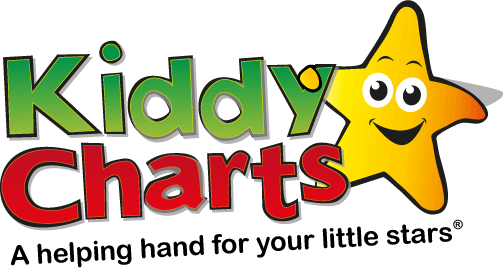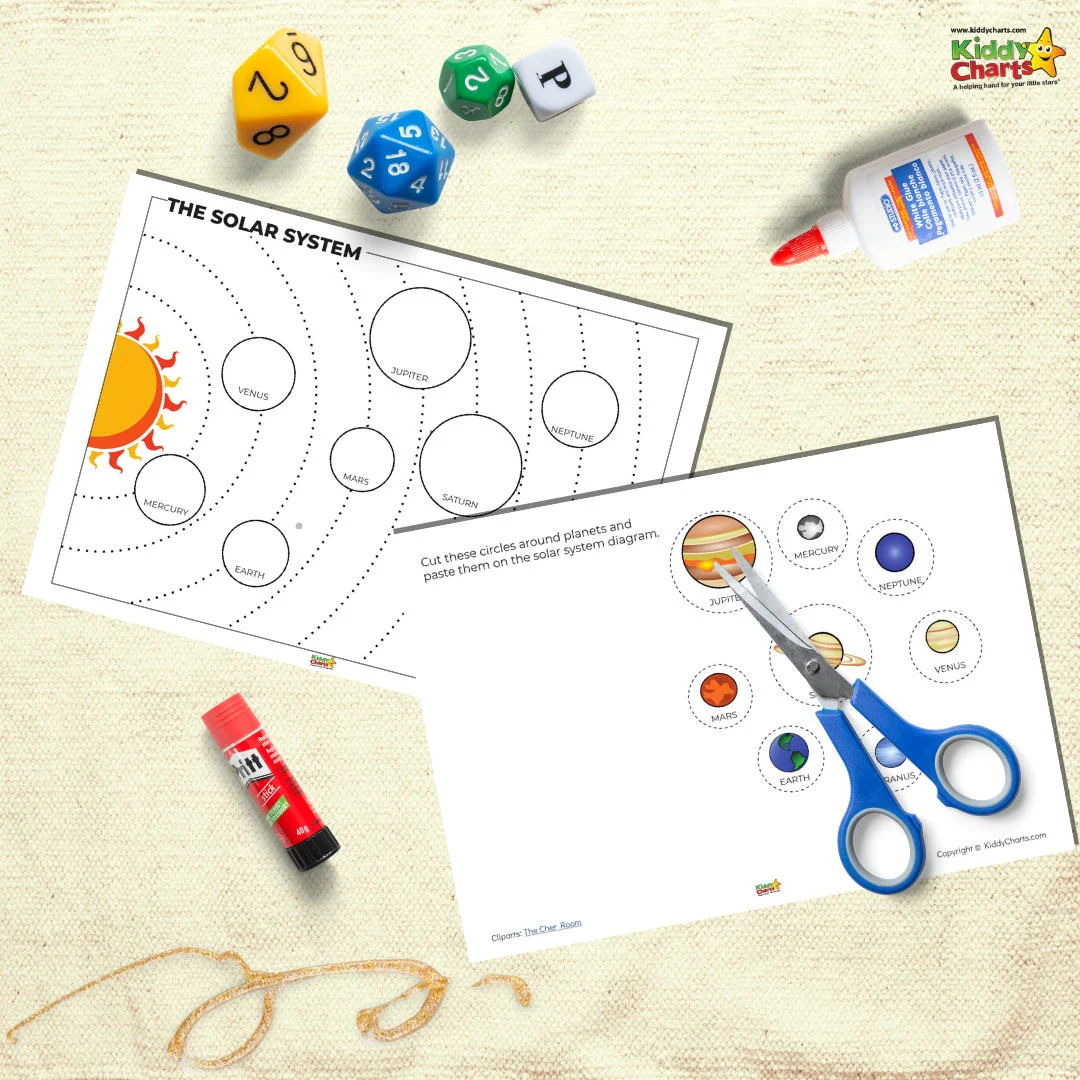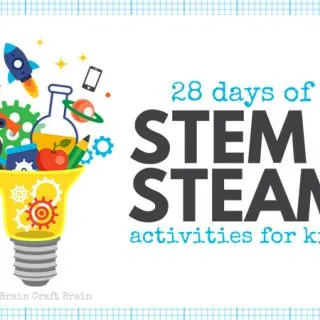We have THE BEST thing for you today – a printable set of science trivia questions for kids that we have put together in collaboration with the wonderful Science Museum Group’s free learning site, Wonderlab+.
Do go and check their site out, after your have explored ours. They have some amazing ideas there to complement this quiz including a fantastic Space Quiz. You could even send a postcard to space too if you were inclined.
We LOVE encouraging learning and these questions are designed as a bit of fun for kids of primary school age. They offer a great way to learn about science and create all the the same time. And we all know that it can be incredibly helpful to have fun trivia questions as a slightly sneaky was of giving our kids a spot of learning in a fun way that’s engaging so they don’t even realise that they are doing it!

We have split our questions into specific age groups for you; and we do hope these work. If not, drop us a line and make suggestions. The trivia questions are designed for you to be able to chop and change things if you want to though as they don’t have age specific titles on any of the pages. This means that you can move sheets in and out and effectively use them how you see fit. We have provided explanations. Some include the odd fun fact in to help make the trivia games a little more interesting for you all. We have given a few samples of the printables below for you to see what they are going to look like.
All the Trivia questions are listed too, as well with interesting facts and explanations. We’ve got the answers for you in the final packs of course, but we couldn’t fit in the explanations on our printables. We have covered various topics and different subjects in science within the questions.
There are easy trivia questions, as well as some harder ones for the older children within your home, or school. You might even be able to do these questions on long car rides too – get them doing a little research on their phones while they are travelling perhaps?
25+ fun science trivia for 5-6 year olds



We have put our thinking caps on and come up with a few ideas for trivia questions with Wonderlab that would be perfect for you to try out with the younger children. Check them all out below, and then scroll down to the image and the button we have below to download them.
1. What is the largest planet in our solar system?
Answer: Jupiter.
Explanation: Jupiter takes the crown as the solar system’s giant, with its massive size allowing it to hold more than 1,300 Earths inside it. This enormous planet is known for its iconic Great Red Spot, a gigantic storm that has been swirling for centuries.
2. Can you name the biggest animal in the ocean?
Answer: The blue whale.
Explanation: The blue whale is not just the biggest animal in the ocean; it’s the largest animal known to have ever existed on Earth, even out-sizing the dinosaurs. These gentle giants can grow up to 100 feet long and weigh as much as 200 tons, which is about the weight of 33 elephants!
3. What does a plant need to make its food?
Answer: Sunlight (Photosynthesis).
Explanation: Plants are rather clever, using sunlight to perform photosynthesis, a process that transforms carbon dioxide and water into glucose, a type of sugar they use for food, releasing oxygen as a magical by-product, which we all need to breathe.

4. What colour is the sun?
Answer: White
Explanation: The sun is actually white, it appears yellow when looking through the Earth’s atmosphere.
5. Who invented the light bulb?
Answer: Thomas Edison.
Explanation: Thomas Edison is often celebrated for inventing the first practical electric light bulb in the late 19th century. His invention illuminated the dark, transforming night into day for millions of people and forever changing how we live and work.
6. How many legs do spiders have?
Answer: Eight.
Explanation: Spiders are part of the arachnid family, which sets them apart from insects. Having eight legs gives them the agility to expertly manoeuvre and create their intricate webs, making them fascinating creatures of the animal kingdom. Fascinating, but a wee bit scary for some.. 😱

7. What is the smallest bone in the human body and where is it?
Answer: The stapes bone, located in the ear.
Explanation: The stapes bone, nestled in the human ear, might be tiny, but it plays a huge role in helping us hear. It vibrates and transmits sound waves to the inner ear, proving that great things indeed come in small packages.
8. What do bees collect from flowers?
Answer: Nectar and pollen.
Explanation: Bees buzz around flowers, collecting nectar, a sweet liquid, and pollen, a fine powdery substance. Bees then turn the nectar into honey back at the hive and pollinate plants, contributing to the growth of fruits, vegetables, and flowers. Bees are really important to help us to maintain diversity.
9. What keeps the Earth orbiting around the Sun?
Answer: Gravity.
Explanation: Gravity, an invisible force, acts like a cosmic leash, keeping Earth in a steady orbit around the Sun. This celestial dance between Earth and the Sun has been going on for billions of years, making life possible on our planet.

10. How many colors are in a rainbow?
Answer: Seven.
Explanation: A rainbow paints the sky with seven beautiful colors—red, orange, yellow, green, blue, indigo, and violet. This natural spectacle occurs when sunlight is refracted or bent by raindrops, splitting the light into its various colors.
11. What do we breathe out that plants need?
Answer: Carbon dioxide.
Explanation: Every time we exhale, we release carbon dioxide, a gas that plants eagerly take in. Using sunlight, they convert this gas and water into oxygen and glucose, a sugar they use as food, in a beautiful exchange that underscores the interdependence of life on Earth.
12. What is the boiling point of water?
Answer: 100 degrees Celsius.
Explanation: At sea level, water reaches its boiling point at 100 degrees Celsius or 212 degrees Fahrenheit. When water boils, it changes from a liquid to a gas, creating steam, a transformation essential for cooking and countless industrial processes.
13. What kind of animal was the first to go into outer space?
Answer: A dog named Laika.
Explanation: Laika, a stray dog from the streets of Moscow, became the first animal to orbit Earth aboard the Soviet spacecraft Sputnik 2 in 1957. Her historic flight paved the way for human space exploration, marking a significant milestone in the space race.
14. Who developed the theory of evolution by natural selection?
Answer: Charles Darwin.
Explanation: Charles Darwin revolutionised our understanding of the natural world with his theory of evolution by natural selection. Observing species in various environments, especially during his voyage on the HMS Beagle, he proposed that species evolve over time through a process where traits beneficial for survival are passed down through generations.
15. What gas do plants produce that we need to breathe?
Answer: Oxygen.
Explanation: Plants are the lungs of the Earth, producing oxygen as a by-product of photosynthesis. This process not only provides the air we need to breathe, but also plays a crucial role in balancing Earth’s atmosphere, making our green friends essential for life as we know it.

16. What is the color of Mars?
Answer: Red.
Explanation: Mars, our neighbouring planet, is famously known as the Red Planet due to its reddish appearance. This colour comes from iron oxide, or rust, covering its surface, giving Mars a distinctive glow that captures our imagination.
17. What is the hardest natural substance on Earth?
Answer: Diamond.
Explanation: Diamonds are not just a symbol of everlasting love; they’re also the hardest natural material found on Earth. Formed under extreme heat and pressure deep within the Earth’s mantle, diamonds are incredibly durable and are used in various tools and technologies for cutting and grinding.
18. What part of the plant grows underground?
Answer: Roots.
Explanation: Roots are the hidden heroes of the plant world, anchoring plants in the soil and absorbing water and nutrients essential for growth. They also store food, helping plants survive through tough conditions, showing that sometimes, what’s unseen is truly foundational.
19. What is the hottest planet in our solar system?
Answer: Venus.
Explanation: You’d think being closest to the Sun would make Mercury the hottest planet in the Solar System. But it’s actually Venus. That’s because the atmosphere of Venus contains lots of carbon dioxide, which stores the Sun’s heat, warming the planet.
20. What do you use to measure temperature?
Answer: A thermometer.
Explanation: A thermometer is a handy tool that tells us how hot or cold something is, using different scales like Celsius or Fahrenheit. Whether it’s checking the weather, cooking, or monitoring health, thermometers help us quantify temperature, guiding our decisions and actions.

21. What is the term for a baby frog?
Answer: Tadpole.
Explanation: Before frogs become the hoppy creatures we know, they start their lives as tadpoles, swimming in water with gills to breathe, just like fish. Over time, they undergo a fantastic transformation, growing legs and losing their tails to hop onto land as frogs, showcasing nature’s magic of metamorphosis.
22. What planet is known for its beautiful rings?
Answer: Saturn.
Explanation: Saturn is the jeweled prince of the solar system, famous for its stunning rings. Made of ice, rock, and dust, these rings circle the planet, creating a celestial spectacle that has captivated humans for centuries, reminding us of the beauty and mysteries that lie beyond our world.
23. Who invented the telephone?
Answer: Alexander Graham Bell.
Explanation: Alexander Graham Bell, driven by his desire to improve communication, invented the first practical telephone in 1876. This landmark invention changed the way people connect, shrinking distances and transforming society in ways Bell could only have imagined.
24. What is Earth’s largest continent?
Answer: Asia.
Explanation: Asia is a tapestry of diverse cultures, landscapes, and histories, making it the Earth’s largest continent. From the frozen tundras of Siberia to the tropical rainforests of Indonesia, Asia’s vast lands host the world’s highest peaks, ancient civilizations, and bustling modern cities, painting a rich mosaic of human and natural diversity.
25. What is the chemical symbol for water?
Answer: H2O.
Explanation: H2O is the simple yet profound formula representing water, a molecule made of two hydrogen atoms bonded to one oxygen atom. This remarkable compound is essential for life, shaping our planet’s surface, climate, and the very existence of living organisms.

26. What natural disaster is measured with a Richter scale?
Answer: Earthquake.
Explanation: The Richter scale quantifies the energy released by an earthquake, providing a numerical rating to describe its magnitude. Developed in 1935 by Charles F. Richter, this scale helps scientists and emergency responders assess an earthquake’s impact, guiding efforts to understand these powerful natural events and mitigate their effects.
27. How many planets are in the solar system?
Answer: Eight
Explanation: This can be a bit controversial: your parents and grandparents might have been taught that the Solar System has nine planets, but in 2006 Pluto was demoted to a ‘dwarf’ planet.
Questions for 7-9 year olds



1. What element breathes fire in the periodic table (slightly unusual way to ask about oxygen’s role in combustion)?
Answer: Oxygen supports combustion.
Explanation: Oxygen, a key player from the periodic table, acts like a fuel for fire. Just as a dragon in a fairy tale breathes fire, oxygen combines with other materials through the process of combustion, releasing energy in the form of flames. Without oxygen, fires wouldn’t roar and crackle – they simply wouldn’t start at all!
2. How many hearts does an octopus have?
Answer: Three.
Explanation: An octopus is like the superhero of the ocean with not one, but three hearts! For us, we have one human heart, and an octopus has three hearts to help it survive. Two of these hearts are dedicated to moving blood beyond its gills, while the third keeps the circulation flowing throughout its body. This trio of hearts ensures the octopus can jet-propel itself in the water, escaping predators and showing off its incredible agility.
3. What is the tallest mountain when measured from base to peak, hint: it’s underwater?
Answer: Mauna Kea.
Explanation: Mauna Kea, a sleeping giant beneath the waves, stretches taller than Mount Everest when measured from its underwater base to its snowy summit. Most of this Hawaiian volcano lies hidden beneath the ocean, revealing only a fraction of its true size above water, like the tip of an iceberg.
4. What phenomenon makes it look like hot water can freeze faster than cold water sometimes?
Answer: The Mpemba effect.
Explanation: The Mpemba effect is a curious and somewhat controversial phenomenon where, under certain conditions, hot water can freeze faster than cold water. Scientists are still unraveling this frosty puzzle, which challenges our basic understandings of thermodynamics and the behaviour of water.

5. Which blood type is known as the universal donor?
Answer: O negative.
Explanation: O negative blood type is like having a golden ticket for emergency transfusions. Since it lacks A, B, and Rh antigens, O negative blood can be safely given to almost anyone in urgent situations, making it extraordinarily valuable in medical emergencies.
6. What kind of animal is a falcon?
Answer: A bird.
Explanation: Falcons are magnificent birds of prey, renowned for their speed, agility, and precision. These aerial hunters soar through the sky, spotting their prey from high above before swooping down at breathtaking speeds to capture it, showcasing the apex of predatory evolution in the bird world.
7. How many planets are in our solar system?
Answer: Eight.
Explanation: Our solar system consists of eight major planets orbiting our star, the Sun. From the rocky realms of Mercury, Venus, Earth, and Mars to the gas giants Jupiter and Saturn, and the ice giants Uranus and Neptune, each planet contributes to the diverse family that calls our solar system home.
8. Who said, “Survival of the fittest”?
Answer: Charles Darwin.
Explanation: Charles Darwin, a pioneering naturalist, introduced the concept of “survival of the fittest” within his theory of natural selection. This idea highlights how species adapt and change over time, with traits that provide a survival advantage being more likely to be passed on to future generations.
9. What do worker bees do in their hive?
Answer: Make honey and pollinate flowers.
Explanation: Worker bees are the tireless labourers of the bee world, performing a variety of tasks essential for the hive’s survival. They collect nectar to make honey, a vital food source for the colony, and as they move from flower to flower, they pollinate plants, playing a crucial role in the reproduction of many fruits and vegetables.

10. What is the primary component of the Earth’s atmosphere?
Answer: Nitrogen.
Explanation: Nitrogen, making up about 78% of the Earth’s atmosphere, is the silent majority of our air. Though we don’t breathe nitrogen in the same way we do oxygen, it plays a vital role in the makeup of the atmosphere, contributing to the growth of living organisms by being a key element in DNA and proteins.
11. Who invented the Geiger counter?
Answer: Hans Geiger.
Explanation: Hans Geiger, a German physicist, lent his name to the famous Geiger counter, a device that detects and measures ionizing radiation. Thanks to this invention, scientists can explore the invisible world of radioactive materials, from understanding natural background radiation to monitoring nuclear reactions.
12. What is the longest river in the world?
Answer: The Nile River.
Explanation: The Nile River, flowing through northeastern Africa, holds the title as the longest river in the world. Stretching over about 6,650 kilometers (4,130 miles), it has been a lifeline for civilisations along its banks for thousands of years, providing essential water, transportation, and sustenance.
13. Which dinosaur is known for its large size and long neck?
Answer: Brachiosaurus.
Explanation: The Brachiosaurus stands out in the dinosaur kingdom with its incredibly long neck and towering height, reminiscent of a living four-legged crane from the Jurassic period. This gentle giant used its skyscraper-like neck to reach high into trees, feasting on leaves and branches.
14. What force pulls objects toward the Earth?
Answer: Gravity.
Explanation: Gravity is the force that keeps us grounded, literally. It’s what makes apples fall from trees and what keeps our feet firmly on the ground. This invisible force of attraction between two masses, like the Earth and us, is what maintains the orbits of moons, planets, and even galaxies.

15. What is magma called when it erupts from a volcano?
Answer: Lava.
Explanation: When magma, the molten rock beneath the Earth’s surface, erupts through a volcano and reaches the surface, it earns a new name — lava. This red-hot liquid rock flows and cools to form new land or hardens into rock, constantly reshaping the Earth’s fiery and dynamic surface.
16. How does the Moon affect the Earth’s oceans?
Answer: It causes tides.
Explanation: The Moon’s gravitational pull is like a magnet for the Earth’s oceans, creating the rising and falling dance of the tides. Depending on the Moon’s position relative to the Earth and Sun, it can cause the waters to swell into high tides or recede into low tides, rhythmically shaping our coastal landscapes.
17. What is the process by which caterpillars turn into butterflies called?
Answer: Metamorphosis.
Explanation: Metamorphosis is nature’s incredible transformation act, where caterpillars enter a cocoon stage and emerge as butterflies. This process allows the once earthbound caterpillar to don wings and take flight, showcasing one of the most dramatic life cycle changes in the animal kingdom.
18. What are shooting stars really?
Answer: Meteors burning up in Earth’s atmosphere.
Explanation: Shooting stars, despite their name, are actually meteors—small pieces of cosmic debris entering Earth’s atmosphere at high speeds. The friction they encounter causes them to heat up and glow, creating a streak of light across the sky as they burn up, offering a brief and spectacular show for those lucky enough to catch a glimpse.

19. What is the name of the galaxy we live in?
Answer: The Milky Way Galaxy.
Explanation: The Milky Way Galaxy is our sprawling cosmic home, a swirling mass of stars, planets, gas, and dust. When we gaze up at the night sky, we’re seeing just a tiny part of this vast galaxy that contains our Solar System, one of billions in the universe, with its luminous band reminding us of our place in the cosmos.
20. What are the tiny particles that make up everything called?
Answer: Atoms.
Explanation: Atoms are the basic building blocks of matter, so tiny that millions could fit on the head of a pin. Everything around us is made of atoms, from the air we breathe to the stars in the sky, each atom a miniature world of even smaller particles engaged in a cosmic dance of energy and force.
21. What do you call a scientist who studies rocks?
Answer: A geologist.
Explanation: Geologists are the detectives of Earth’s history, studying rocks to uncover the secrets of our planet’s past. They explore mountains, valleys, and the layers beneath our feet to understand how Earth has been shaped over billions of years, reading stories written in stone that reveal the dynamic processes of our world.
22. What continent is also a country?
Answer: Australia.
Explanation: Australia is unique on the global map, serving both as a continent and a country, the only nation to hold this dual title. This vast land is known for its rich biodiversity, including the Great Barrier Reef, the Outback’s rugged landscapes, and distinctive species like kangaroos and koalas, illustrating the diversity of life and landforms on our planet.

23. What celestial body orbits the Earth?
Answer: The Moon.
Explanation: The Moon, Earth’s constant companion, gracefully orbits our planet, illuminating the night sky with its changing phases. Its gravitational pull influences the tides and even subtle aspects of life on Earth, while its presence reminds us of the interconnectedness of the cosmos.
24. What is the layer of air that surrounds the Earth called?
Answer: The atmosphere.
Explanation: The atmosphere is Earth’s protective blanket, a mix of gases that envelopes our planet, shielding us from the sun’s harsh rays and space’s cold vacuum. This thin layer enables life to thrive
25. What scientist is known for his laws of motion and gravity?
Answer: Isaac Newton.
Explanation: Sir Isaac Newton, a key figure of the Scientific Revolution, is best known for formulating the laws of motion and universal gravitation. His insights laid the foundational principles for classical mechanics, profoundly shaping our understanding of the physical world and the forces that govern it.
Questions for 10-11 year olds



1. What dwarf planet was temporarily called Santa?
Answer: Haumea
Explanation: When something new is discovered in space, such as a potential new planet, it’s given a temporary name until it is confirmed to be real. The dwarf planet now called Haumea was given the temporary name Santa because it was discovered a few days after Christmas. Ho ho ho!
2. What is the name of the largest moon of Saturn?
Answer: Titan.
Explanation: Titan stands out as Saturn’s largest moon and is remarkable in our solar system for having a dense atmosphere and even lakes of liquid methane on its surface. It’s a world of its own, with conditions that scientists study to understand more about planetary bodies beyond Earth.
3. What is the rarest blood type in humans?
Answer: AB negative.
Explanation: AB negative blood type is a fascinating puzzle in human genetics, making up less than 1% of the world’s population. This rarity turns its donors into highly sought-after helpers in medical emergencies, where matching blood types can mean the difference between life and death.

4. Who discovered penicillin?
Answer: Alexander Fleming.
Explanation: In a fortunate twist of fate, Alexander Fleming stumbled upon penicillin in 1928 when he noticed that a mould called Penicillium notatum had killed bacteria on a petri dish. This discovery revolutionized medicine, introducing the age of antibiotics and saving countless lives from bacterial infections.
5. What is the term for animals that eat only plants?
Answer: Herbivores.
Explanation: Herbivores are nature’s vegetarians, thriving entirely on a diet of plants. From the giant elephants that trample through the savannah to the humble rabbit in the backyard, herbivores play a crucial role in ecosystems by spreading seeds and maintaining the balance of plant populations.
6. Where in the human body would you find the femur?
Answer: The leg (it’s the thigh bone).
Explanation: The femur, or thigh bone, is not just any bone; it’s the longest and strongest bone in the human body. Acting as a pillar of support, it carries the weight of the body, allowing us to walk, run, and jump by connecting the hip to the knee.
7. What element is represented by the letter “O” on the periodic table?
Answer: Oxygen.
Explanation: Oxygen, denoted by the letter “O,” is the breath of life for most creatures on Earth. Making up around 21% of the Earth’s atmosphere, this vital element supports combustion and respiration, playing a key role in the energy processes of living organisms.
8. What is the term used to describe the study of the universe and everything in it?
Answer: Astronomy.
Explanation: Astronomy is the ancient science of studying celestial objects and phenomena beyond Earth’s atmosphere. From the movements of planets to the mysteries of black holes and galaxies, astronomy helps us understand our place in the vastness of the universe.

9. What force keeps the planets in orbit around the sun?
Answer: Gravity.
Explanation: Gravity, the universal force of attraction, acts as the cosmic glue that keeps planets, including Earth, in a delicate dance around the Sun. This gravitational pull balances with the planets’ momentum, creating stable orbits that have lasted for billions of years.
10. What is the speed of light?
Answer: Approximately 299,792 kilometers per second.
Explanation: The speed of light is the ultimate speed limit in the universe, a constant that dictates how fast information, energy, and matter move through space. This incredible speed enables light from the Sun to reach Earth in about 8 minutes, connecting us with the cosmos.
11. What is the process by which green plants make their food using sunlight called?
Answer: Photosynthesis.
Explanation: Photosynthesis is nature’s solar-powered miracle, where green plants convert sunlight into chemical energy. Using carbon dioxide from the air and water from the soil, they produce glucose for food and oxygen as a byproduct, fueling life on Earth.
12. Who is credited with developing the theory of general relativity?
Answer: Albert Einstein.
Explanation: Albert Einstein revolutionized our understanding of space, time, and gravity with his theory of general relativity. Introduced in 1915, this groundbreaking theory explained how massive objects like stars and planets warp the fabric of space-time, influencing the motion of objects and light around them.

13. What is the smallest country in the world?
Answer: Vatican City.
Explanation: Nestled within the city of Rome, Vatican City holds the title of the smallest independent state in the world by both area and population. This tiny sovereign entity is the spiritual and administrative center of the Roman Catholic Church, led by the Pope.
14. What is the main difference between frogs and toads?
Answer: Frogs have smoother skin and are more likely to live near water.
Explanation: While frogs and toads belong to the same amphibian family, they differ in habitat and appearance. Frogs usually have moist, smooth skin and prefer living close to water, whereas toads have drier, bumpier skin and are often found in drier environments.
15. How many teeth does an adult human usually have?
Answer: 32.
Explanation: An adult human typically has 32 teeth, including incisors, canines, premolars, and molars, each designed for specific functions in biting, tearing, and grinding food. However, the wisdom teeth, the last to emerge, often require removal due to space constraints in the mouth.
16. What gas do we exhale when we breathe?
Answer: Carbon dioxide.
Explanation: When we breathe, our bodies take in oxygen needed for cellular processes and exhale carbon dioxide as a waste product. This exchange of gases is a fundamental part of the respiratory system, keeping our cells functioning and our bodies alive.
17. What phenomenon occurs when the Moon passes between the Earth and the Sun?
Answer: A solar eclipse.
Explanation: A solar eclipse is a celestial event that occurs when the Moon moves between the Earth and the Sun, casting a shadow over the Earth and temporarily blocking the Sun’s light. This can result in a stunning display, from a partial eclipse to a breathtaking total eclipse, where day momentarily turns into night.

18. What is the scientific study of plants called?
Answer: Botany.
Explanation: Botany is the branch of biology that focuses on the study of plants. Botanists explore the diverse world of plants, from tiny algae to towering trees, investigating their structure, growth, reproduction, metabolism, diseases, and the relationships with their environment and wildlife.
19. What part of the cell contains the genetic material?
Answer: The nucleus.
Explanation: The nucleus is often referred to as the “control center” of the cell because it houses the cell’s genetic material, or DNA. This genetic blueprint guides the cell’s functions and carries the instructions for growth, development, and reproduction.
20. In what unit is electric power measured?
Answer: Watts.
Explanation: Electric power is measured in watts, a unit that quantifies the rate of energy conversion or transfer. Whether it’s a light bulb illuminating a room or a charger powering your phone, watts help us understand how much electrical energy devices use or generate.
21. What is the term for a material that will not carry an electrical charge?
Answer: Insulator.
Explanation: Insulators are materials that resist the flow of electrical current, effectively blocking the passage of electrons. Common insulators include rubber, glass, and plastic, playing crucial roles in safely containing and directing electrical energy in everyday applications.

22. What is the only planet in our solar system not named after a god or goddess?
Answer: Earth.
Explanation: Earth stands out in our solar system as the only planet not named after a deity from ancient mythology. Its name comes from Old English and Germanic words meaning “the ground” or “the soil,” reflecting humanity’s deep-rooted connection to our home planet.
23. What type of animal is a penguin?
Answer: A bird.
Explanation: Penguins are flightless birds adapted to life in the water. With their streamlined bodies, flippers for swimming, and insulated layers of fat and feathers for warmth, penguins are perfectly equipped for their cold, aquatic habitats, primarily in the Southern Hemisphere.
24. What is the chemical formula for table salt?
Answer: NaCl (Sodium Chloride).
Explanation: Table salt, scientifically known as sodium chloride, is composed of sodium (Na) and chlorine (Cl) atoms in a 1:1 ratio. This simple compound is essential for human health, playing key roles in nerve transmission, muscle function, and fluid balance.

25. What causes the phases of the Moon?
Answer: The Moon’s orbit around the Earth.
Explanation: The phases of the Moon are caused by its orbit around the Earth, changing the portion of the Moon illuminated by the Sun that we can see from our vantage point. This cycle, from new moon to full moon and back, unfolds over approximately 29.5 days, showcasing the Moon’s enduring rhythm in the night sky.
That’s everything for you – so now you want to printable, right?
We hope you like these questions and ideas as much as we enjoyed putting them all together for you. If you are looking for other science activities for kids on the site we have a whole section dedicated to them! Of course there is also Wonderlab+ too for even more fun for the kids in STEM. How about checking these out on site?
Fun STEM Activities
If you're looking to create something fun with your kids then these STEM activities are for you! We hope you enjoy them.
Simple science experiment for kids with vinegar and baking soda #31DaysOfLearning
One of our best STEM posts is this simple science experiment for kids with vinegar and baking soda from our #31DaysOfLearning event.
Build your own robot free STEM printable
Build your own robot with our free printable. It's fun and it's a STEM activity to help your kids learn. Win-win!
Free solar system game for kids to help with STEM learning
Our free solar system game for kids can take your kids to another planet! Download and play today.
Simple weather activity: Shaving foam rain clouds #31DaysOfLearning
This is a lovely simple activity that helps to teach kids about clouds. It is so easy to set up too, made from items you should have in the house anyway.
Free weather chart
We have a completely free weather chart for you to use with the kids too - keep track of the weather in a fun and interactive way, every day.
There are more ideas from other sites that we love here too:
More STEM ideas from the web
Combine learning and fun with these STEM ideas from around the web.
28 Days of STEM Activities and STEAM Activities for Kids
This post has 28 days of STEM activities for your kids to try out and enjoy.
13+ Math Toys to Inspire STEM
Who said toys can't be educational? Check out these top math toys for STEM.
40 STEM Activities for Kids
Can't get enough STEM ideas? Here are 40 more!
Fizzing Colors Science Activity
This looks like so much fun - ideal for little hands to explore with. So colourful, and fabulous for them!
Don’t forget to sign up to our newsletter as well:
Thanks for coming to see us as always,
Helen
























